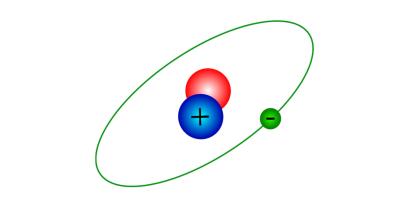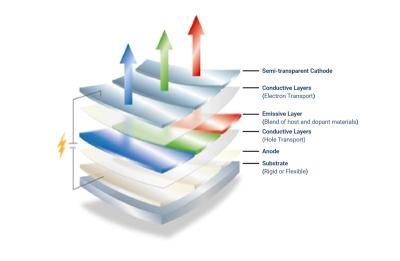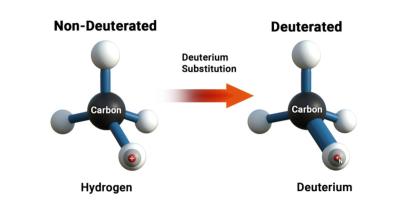This is a sponsored post by Clearsynth
In the ever-evolving field of display technology, OLED displays have emerged as a prominent player due to their ability to deliver stunning visuals, energy efficiency, and flexibility.
One key component that has contributed to the success of OLED displays is deuterium, a stable isotope of hydrogen. Deuterium's impact on OLED displays can be seen in its potential to magnify these devices' overall performance and lifespan.
- Deuterium (2H, D): Discovered in 1931 by H. Urey, who won the Nobel Prize in 1934 and named it Deuterium.
- Stable, nonradioactive isotope of hydrogen with one proton and one neutron in its nucleus
- Natural abundance of 0.015% of hydrogen atoms on Earth
Deuterium, a heavier isotope than hydrogen, offers several advantages in OLED displays. First and foremost, deuterium is known to increase the brightness and efficiency of OLED displays. TV Panel manufacturers use OLED materials to generate the 3 primary colours (red, green, blue) in full-colour display. They had a challenge of large electronic power consumption for blue OLED relative to green and red OLEDs. This has been successfully overcome by deuterated blue OLED emitters which provide higher stability and prolonged lifetime, resulting in greater brightness and efficiency.
By incorporating deuterium into the structure of OLED materials, researchers have observed a noticeable improvement in the power conversion efficiency of the displays. Deuterated benzyl moieties & heterocyclic compounds in OLED devices have demonstrated a higher power conversion efficiency compared to their protonated counterparts. This improvement in efficiency is linked to the longer excited state lifetime of organic molecules induced by deuterium, which leads to a reduction in nonradiative decay rates. This positive outcome with deuterated blue OLED has resulted in adoption of deuterated OLED compounds to red, green & yellow emitters and other layers in the OLED stack.
Additionally, deuterium has been found to enhance the operational lifetime of OLED displays. By replacing hydrogen atoms with deuterium atoms in the host materials of OLED displays, researchers have observed an extended device lifetime. In a lifetime study for OLED, the LT50, which represents the time at which 50% of devices fail, has been increased to 4X in deuterated OLEDs compared to their non-deuterated counterparts. The improved device stability of deuterated hosts in OLEDs can be attributed to the slower kinetic rate for unwarranted chemical reactions facilitated by the heavier deuterium atom. The results highlight the potential of deuterium in improving the longevity and reliability of OLED displays.
Not only does deuterium improve the efficiency and operational lifetime of OLED displays, but it also has a significant impact on other aspects as well. For example, deuterium's use in OLED displays has also been beneficial for neutron studies. The difference in neutron scattering length between hydrogen and deuterium allows for more accurate investigations at the interfaces of the organic layers in OLED devices, which can shed light on the morphological stability and heat generation within the device. This improved understanding of the interfaces within OLED devices contribute to advancements in efficiency and longevity. With panel makers considering extending deuterated technology from OLED TV to smartphones, automotive displays & wearables, the impact of deuterium in enhancing the performance and lifespan of OLED displays cannot be understated. Increase in replacement of the “H” with “D” in areas such as OLED, Semiconductors & Optical Fibres and Pharmaceutical & Drug Discovery is proving to be a game-changer!
About Clearsynth
Clearsynth is a Global Leader in Deuterium Chemistry, specialized in the development and manufacturing of Deuterated Reagents, Deuterated Solvents and Deuterated Intermediates from milligram to tonnes in state-of-the-art facilities. Expertise in bulk and custom synthesis capabilities allows our customers to power advancements in OLED, Drug Discovery, Semiconductor and Optical Fiber Industries.
Take the first step towards a future of limitless opportunities by breaking paradigms through Deuterated compounds. Connect with our experts at d2o@clearsynth.com to discuss your research and production requirements.
Kamal Kurra
Associate Director – Sales & Marketing, Deutero
kamal.k@clearsynth.com
Editorial Assistance: Dhara Joshi
References -
1) Liu, Xuelong et al. (2021, February 7). Isotope Effect of Host Material on Device Stability of Thermally Activated Delayed Fluorescence Organic Light‐Emitting Diodes.
2) Krause-Heuer, A. M., Yepuri, N. R., Darwish, T. A., & Holden, P.. (2014, November 13). Mild Conditions for Deuteration of Primary and Secondary Arylamines for the Synthesis of Deuterated Optoelectronic Organic Molecules.


